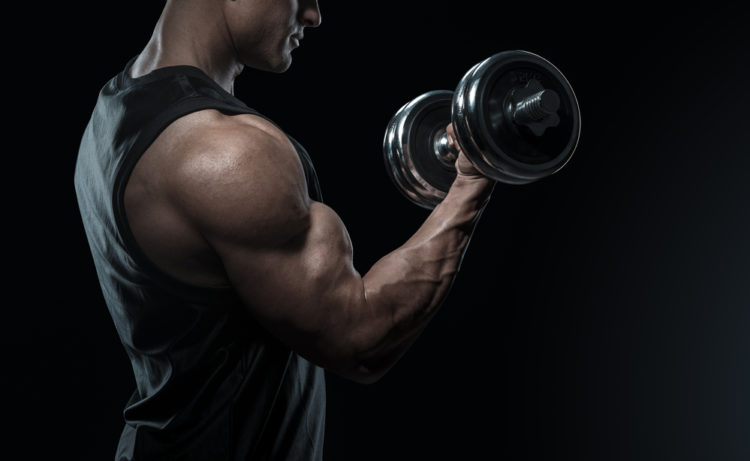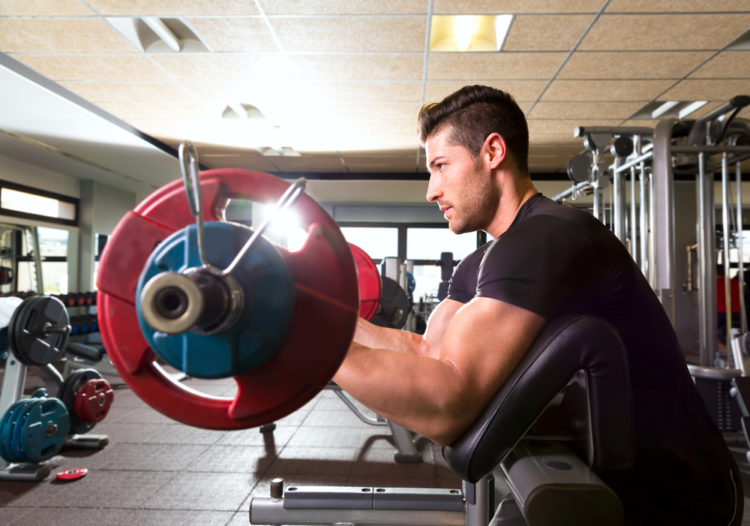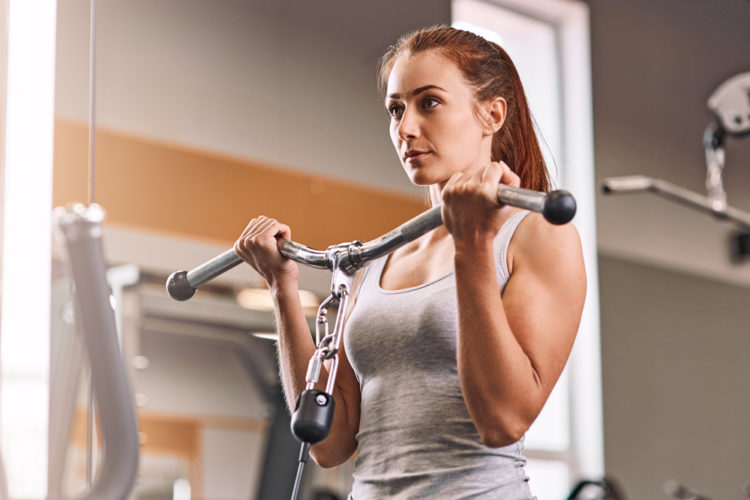It’s the one exercise everybody knows about when they’re a gym newbie: the biceps curl and all its variations.
This exercise is in our DNA. Nobody taught you how to do them. But when you enter the gym, you’re drawn to the dumbbell rack, like chips to salsa. You roll up your shirt sleeves, grab a pair of dumbbells, make your lifting face and proceed to bust them open.
And lucky for you the mirrors are right by the dumbbell racks, so you can admire your hard work. Because 99% of gym goers want big biceps and the other 1% are lying to themselves.
However, there are reasons to train the biceps other than for vanity. Shocking I know.
So, the next time you go to the gym for arm day, you’ll have 3 more reasons to admire your guns.
Editor’s note: The content on BarBend is meant to be informative in nature, but it shouldn’t take the place of advice and/or supervision from a medical professional. The opinions and articles on this site are not intended for use as diagnosis, prevention, and/or treatment of health problems. Speak with your physician if you have any concerns.

1. Biceps aid in shoulder stability
The biceps are a double-headed muscle, which has two points of origin in the shoulder area. The short head of the biceps originates at the top of the shoulder blades (technically called the scapula) and the long head originates just above the shoulder joint.
Because of this, the biceps help the rotator cuff with shoulder stability, particularly through the shoulder area. And healthy rotator cuffs are important because you need the stability the cuffs give to be able to move the shoulder through its full range of motion. You cannot go overhead without it.
Furthermore, rotator cuff injuries suck and take a long time to heal.
The rotator cuff muscles anchor a bone in the upper arm to the scapula and collar bone to keep the shoulder in a vertical position, and the biceps anchor this ball and socket joint as well.
And this compression from both ends aids in keeping the shoulder joint where it should be.
Curls, when done correctly make more than your biceps happy.
[Related: 11 bicep curl variations you should try]
2. Biceps curls play a role in shoulder rehabilitation
The biceps are primarily an elbow flexor, but they also play a secondary role in shoulder flexion. The biceps muscles are recruited to help your anterior deltoid — the front of the shoulder — when you’re lifting your shoulder into flexion.
Furthermore, because the load is in front of the shoulders, the scapular stabilizers muscles of the lats, rhomboids and lower traps are recruited isometrically to prevent the shoulder from rolling forward while doing curls. (Of course, this is only if you’re practicing correct bicep curl form.)
This is why doing biceps curls in the later stages of a rehab program is another way to help strengthen the rotator cuff and the muscles surrounding the shoulder.(1)(2)
While biceps curls shouldn’t be the primary exercise used to strengthen your shoulders, they play an important role in a rotator cuff and shoulder strengthening program.
Note: Once again, this isn’t medical advice. Listen to your physical therapist or medical practitioner.

3. Strong biceps play a big role in exercise performance
Besides curls, think of all the other exercises where the biceps are used.
The biceps assist in many lifts that are fundamental to strength sports. Because they help you pull, deadlifts and even snatches and cleans recruit these muscles, which is why bicep exercises are important for Olympic weightlifters.
The biceps also play a role in exercises such as vertical and horizontal rows, chin ups, and pull ups as the secondary muscles behind the primary muscles of the shoulders and upper back. Having weaker biceps makes it more difficult for the larger muscles of the back to do their job, and if your biceps give out before your back muscles do, then you’re not working these muscles to the best of your ability.
Because you’re only as strong as your weakest link, having stronger biceps will only help when it comes to building a strong and muscular upper back. Have you ever seen a lifter with a big back and puny biceps? I rest my case.
Furthermore, a biceps tendon rupture is a common injury to deadlifters and Olympic lifters, behind lower back and neck injuries. Strong biceps prevent the elbow joint from moving excessively while deadlifting heavy, especially when using a mixed grip.
Having strong biceps doesn’t entirely stop tendon tears but it does play a role in its prevention.
[Related: How to avoid a bicep tear]

Wrapping Up
Big and strong biceps not only look good but play an important role in the health and performance of your shoulders and back.
Although it’s worth remembering that the triceps make up 70 percent of the upper arm, having strong biceps helps prevent tricep strains, keeps the shoulders in place and allows for smoother upper arm movements.
Besides who’s looking at your triceps when you flex? So, go ahead and curl to your heart’s content in front of a mirror. You know what to do next.
Featured image via Improvisor/Shutterstock
References
- Drakos MC, et al. Arthroscopic transfer of the long head of the biceps tendon: functional outcome and clinical results. Arthroscopy. 2008 Feb;24(2):217-23.
- Thompson KL. Rupture of the distal biceps tendon in a collegiate football player: a case report. J Athl Train. 1998 Jan;33(1):62-4.